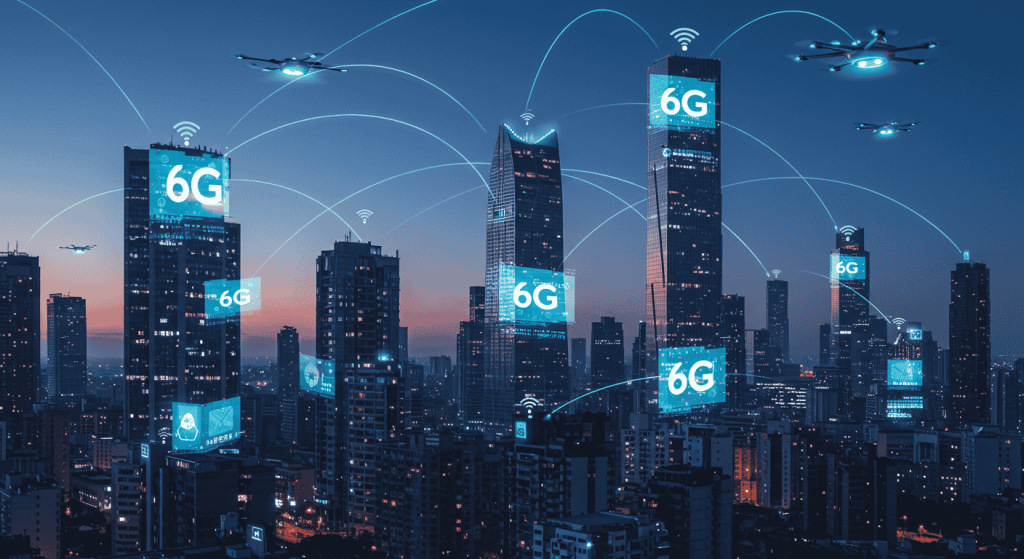Introduction
The mobile industry is on the brink of its next technological leap. While 5G technology is still expanding globally, discussions about 6G are already gaining momentum. In this blog, we’ll explore the difference between 5G and 6G, their potential impacts, and what consumers and businesses can expect from the next generation wireless technology.
What Is 5G and Where Are We Now?
5G, the fifth generation of mobile networks, brought major advancements over 4G LTE, including:
-
Faster data speeds (up to 10 Gbps)
-
Lower latency (as low as 1 millisecond)
-
Massive device connectivity
-
Enhanced mobile broadband and IoT support
Today, 5G coverage is expanding across major cities and countries, supporting innovations in smart cities, autonomous vehicles, and remote healthcare. But as we reach the peak of 5G capabilities, the tech world is already looking ahead.
What Is 6G Technology?
6G is the upcoming sixth generation mobile network expected to launch commercially around 2030. Although still in the research phase, it aims to significantly outperform 5G in terms of speed, latency, and intelligence.
Key 6G Features (Compared to 5G):
| Feature | 5G | 6G (Expected) |
|---|---|---|
| Peak Data Rate | Up to 10 Gbps | 100 Gbps to 1 Tbps |
| Latency | ~1 millisecond | <0.1 millisecond |
| Frequency Band | Sub-6 GHz, mmWave | Terahertz (THz) spectrum |
| AI Integration | Limited | Native AI-driven networks |
| Device Density Support | 1 million/km² | 10 million/km² |
5G vs 6G: Core Differences
1. Speed and Latency
While 5G is fast, 6G speed vs 5G could be 10 to 100 times faster. 6G will reduce latency to virtually zero, opening doors for real-time applications like holographic communication and brain-computer interfaces.
2. Network Intelligence
6G will feature AI-powered self-optimizing networks, making connectivity more seamless, reliable, and adaptive. This is a significant step forward from the manual network management seen in 5G.
3. Connectivity and IoT
The Internet of Things (IoT) will expand with 6G. It can support hyper-connected environments, like smart factories and digital twins, with unparalleled efficiency and scale.
Benefits of 6G Technology
The 6G benefits expected include:
-
Ultra-high-speed connectivity for immersive AR/VR
-
AI-native infrastructure for smart decision-making
-
Next-level automation in industries and urban planning
-
Secure and decentralized networks
-
Real-time multi-sensory communications
Reade More: AI Tools 2025 – What’s New Today?
Applications of 6G in the Real World
-
Holographic Telepresence for virtual meetings
-
Autonomous systems with instant communication
-
Remote robotic surgeries
-
Metaverse experiences with tactile feedback
-
Environmental monitoring using smart sensors
Challenges Ahead for 6G
While the future is promising, 6G mobile network development faces hurdles:
-
Technological feasibility of THz frequencies
-
Global standardization and regulation
-
Infrastructure investment
-
Privacy and cybersecurity risks
Governments and tech giants like Samsung, Huawei, Nokia, and Qualcomm are already investing heavily in 6G research to overcome these challenges.
The Future of Mobile Technology: What to Expect
As 5G adoption continues, 6G will begin shaping the future:
-
We’ll move toward ubiquitous connectivity
-
Devices will be AI-integrated by default
-
Data will flow at mind-bending speeds
-
Mobile technology evolution will impact everything from healthcare to space communications
FAQs
1. What is the difference between 5G and 6G?
5G vs 6G mainly differs in speed, latency, frequency, and intelligence. 6G will be much faster, smarter, and capable of handling more devices.
2. When will 6G be available?
6G is expected to roll out commercially around 2030, though research and trials are already underway globally.
3. How fast will 6G be compared to 5G?
While 5G can reach up to 10 Gbps, 6G speed may exceed 100 Gbps to 1 Tbps, depending on use cases and deployment.
Final Thoughts
The mobile network evolution from 5G to 6G marks a major shift in how humans and machines communicate. With 6G, we are heading into a world of instant, intelligent, and immersive communication.











